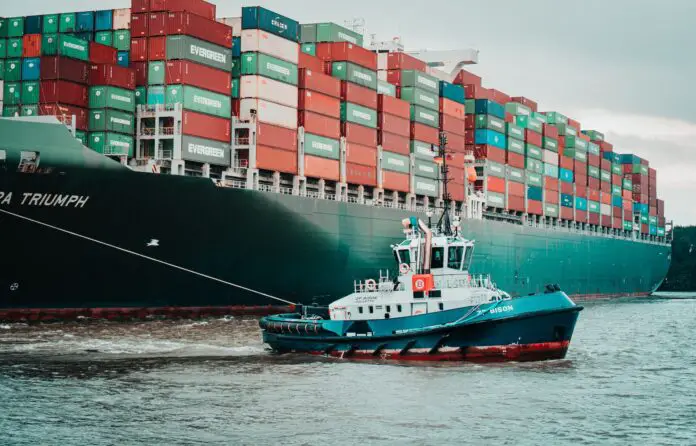An effective supply chain ensures that goods reach their destinations in a timely fashion using every mode of transportation. When evaluating global trade methods, over 80% of goods are shipped over oceans in shipping containers. However, delays in shipping can create bottlenecks for companies, which lead to dissatisfied customers.
In fact, recent studies have found that consumers want more visibility when it comes to the shipment of products. They want to know where their shipment is at all times. Roughly 93% of consumers want to have current and accurate shipping information that they can access on demand, while 47% of consumers say that they actively avoid purchasing products from companies that have poor supply chain visibility.
Understanding what problems are causing the delays in supply chain shipping management can help companies streamline their processes, cut costs, and retain customers.
Common Challenges Affecting Supply Chains
Supply chains that involve the use of shipping containers traveling across oceans and other waterways have complicated logistical strategies that rely on the cooperation and reliability of a range of drayage and transportation companies. Because of this complicated web, there are several problems that can create delays with container delivery:
Weather Delays
Oceanic weather delays can prevent vessels from reaching ports. The container ships must stay in dock to wait until the weather improves enough to move, or the vessel reroutes to calmer and safer waters. Both instances can create delays that may last for several days to several weeks.
Rerouting Delays
In addition to rerouting the vessel due to weather-related issues, vessels may also reroute for a host of other reasons. Mechanical problems, geopolitical unrest, and other problems may occur, causing the ship to select a different route.
Port/Railyard Delays
Once a container arrives at a port or railyard, it may not be unloaded immediately. Other companies may be in line ahead of your shipments, creating congestion and long waiting periods.
Drayage Delays
While drayage involves freight moving for short distances while using a range of transportation methods, drayage companies may cause delays in the transportation of shipments. Not having enough workers to load and unload shipments, not having enough space to hold shipments that will be loaded onto trucks, and not having enough trucks to move large loads are all common drayage problems.
Improving Container Management Visibility
To improve and maintain a reliable supply chain, a company must understand where the delay is occurring and what is causing it. Then you can know whether the problem is internal with your workers or if the issue lies with contracted shipping companies. Here are several ways to improve container management visibility.
Streamline Communication With Partners
When there is a lack of communication between companies, or communication is slow to reach the necessary personnel, it causes the small logistical issues to become larger problems. No one will know their role in fixing the problem, and the partner may also not be able to provide the right solution until it is too late.
To improve communication with partners, create a single point of contact who will handle all questions and inquiries. You may also invest in communication technologies and other solutions to ensure that information reaches the right person in a timely fashion.
Invest in Tracking Technologies
Tracking technologies also provide more transparency in supply chain processes. GPS trackers, RFID chips, and other technologies can be installed on trucks and containers to monitor shipments throughout the transportation process. With these technologies and software, you know where vehicles and containers are at all times, and can see when a shipment reroutes, is delayed or is sitting idle. Once you know where in the process delays are occurring, you can implement robust shipping strategies to combat the issues, such as switching shippers or improving loading/unloading work.
Data Accuracy Is Key
Both communication and tracking solutions rely on gathering, evaluating, and transmitting information between companies and workers. This data has to be accurate and timely for you to create the necessary changes to your supply chain to avoid delays. You can also use this data in logistical strategies to improve shipment schedules, reroute vehicles during emergencies, and address dwell times for containers.
A range of software and apps can allow you to gather information by centralizing the data on one network or platform that is accessible to authorized users. Companies can then reliably view and update shipment information to improve data accuracy. By having this data available in real-time, you are also able to inform consumers of the delivery status of shipments. Many companies are now offering mobile apps to customers to allow them to see where goods are in the supply chain process right on their phones. This method offers more transparency in operations, which can instill greater levels of customer trust and brand loyalty.
Having reliable container management ensures that these goods quickly reach warehouses, stores, and eventually consumers. Instituting methods that provide more viability and transparency to the supply chain can help your company avoid many transportation issues.
Check out the accompanying resource for more information.
Infographic provided by AV Logistics, shipping container tracking
Peter Pace
Peter Pace is VP of Business Development atAV Logisticsand an industry veteran with 35 years of experience in all facets of international shipping and intermodal transportation. He is responsible for identifying new opportunities for growth and expansion within the client bases of AV Logistics and its strategic drayage partner, C&K Trucking LLC.

















































